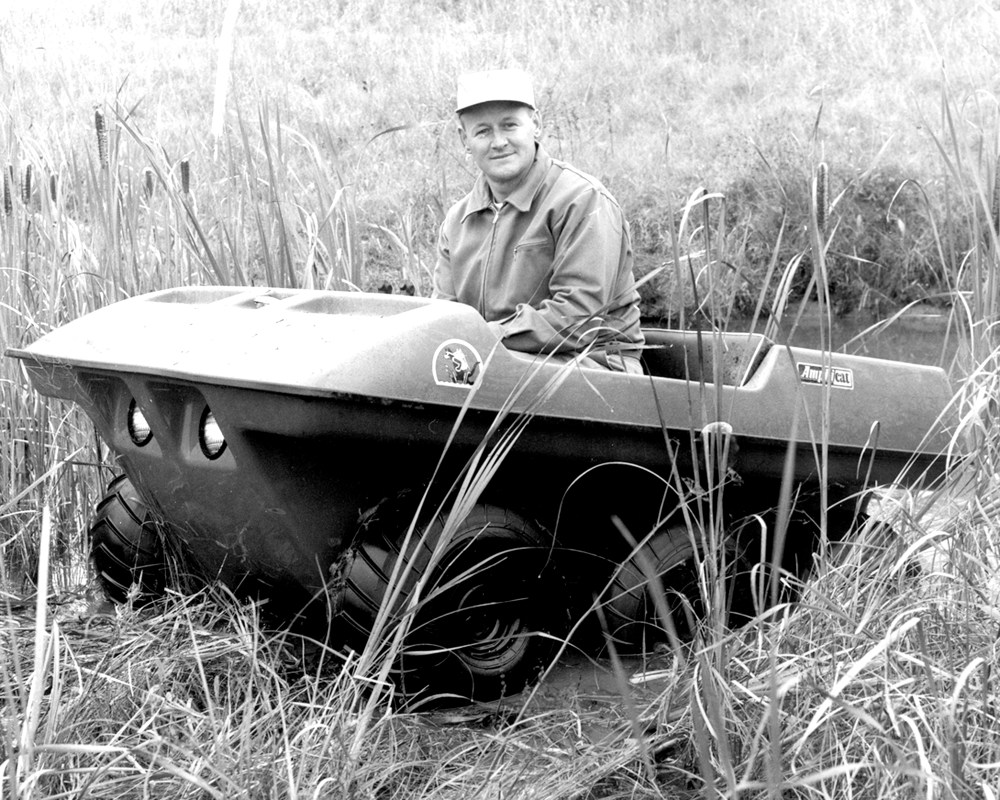SPORTS FLASHBACK 1968: Amphibious ATV
Full article: https://www.thecarillon.com/local/2024/10/27/sports-flashback-1968-amphibious-atv-perfect-for-hunting?utm_source=flipboard&utm_content=other
Alphonse Fournier of La Broquerie is touting the Amphicat, a six-wheel drive vehicle with a fiberglass body, capable of travelling as easily on water as on land, as an ideal hunting vehicle to navigate the somewhat swampy conditions found in parts of the Southeast.
Fournier is a new dealer for the machine, which went into production in Canada by Behoo Industries, in 1965. The popular skid-steer, all-terrain vehicle now is being distributed by dealers from Montreal to Vancouver, including Fournier at La Broquerie.
The Amphicat is able to reach speeds of up to 30 mph on land and travels well in water as well, Fournier says. The new breed of all-terrain vehicles, is powered by a 16-hp air-cooled engine.

Like the snowmobile, the Amphicat was almost a decade in development before the first machines went on the market in 1965.
Ronald James “Ron” Beehoo, a machinist living in Ontario, left his job in 1957 to start Beehoo Engineering Limited. Working in the basement of the family home, in his spare time, Beehoo put together an amphibious ATV around 1961, to get around a peat bog near Cornwall, Ontario.
Beehoo’s first prototype was a small tracked vehicle, which he did not like it too much, so he set out to design a 6-wheel ATV.
Eight years of planning, testing, building and restyling produced the Amphicat, a six-wheel, off-the-road amphibious vehicle, which is now finding wide appeal among sportsmen.
In 1965, convinced that he had a winner, Beehoo hired a few people and began to produce his Amphibious All Terrain Vehicle (AATV) in the company’s facility, as a subsidiary of Beehoo Engineering.
As more and more people heard about the Amphicat, Beehoo was unable to keep up with the demand at Beehoo Engineering’s small facility. Eager to maximize sales in the United States, Beehoo sold the exclusive United States rights for the manufacture and sales of his ATV to an American company.
Production began slowly last year, and about 1,000 units were produced and delivered to dealers and sportsmen the world over. Volume production began in July of this year, and initial production schedules call for 12,000 units annually.
One of the biggest boosts to the popularity of the Amphicat in the U.S. comes with the use of the machine in the television series, Banana Splits, in which a fictitious rock band roars around on various coloured models of the machine.
Beehoo Industries counts on distributors located in the metropolitan areas of Montreal, Vancouver and Winnipeg to keep up with the increasing Canadian sales of the Amphicat, which is now the most popular ATV on the market.
Fournier believes Southeast hunters and others looking for an outdoor recreation vehicle that can handle the rough terrain between snowmobile seasons will consider becoming part of the growing number of Amphicat customers.

